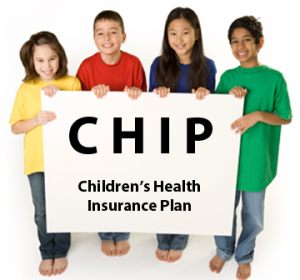By Steve Pollock, Chief Operating Officer
Since
1997, the Children’s Health Insurance Program (CHIP) has helped children of low
income families get access to high quality health care – and since 2009, CHIP
has included dental care.
Today,
CHIP covers more than 8 million U.S. children in low income families whose
income exceeds Medicaid eligibility levels. CHIP also offers financial
protection from high out-of-pocket healthcare expenses.
CHIP
is a public policy success story with bipartisan support from state and federal
policy makers.
The
program helps alleviate one of the biggest obstacles to getting preventive
dental care – COST. Research shows that uninsured children are far less likely
to receive medical/dental care than peers who have health insurance.1 Nearly half of all parents in a 2013 survey
said that over the previous 12 months they or a family member had delayed
seeing a dentist because they couldn’t afford the expected out-of-pocket costs.2 In a 2011 survey, 63 percent of parents said
affordability was a key motivating factor for enrolling their children in the
CHIP or Medicaid programs.3 Today, children
enrolled in Medicaid/CHIP have much higher rates of access to and use of oral
health services compared to children with no coverage.4
By
providing affordable coverage to 8 million low-income children, including 52
percent of Hispanic children and 56 percent of African American children
nationwide, Medicaid and CHIP address racial, ethnic and socioeconomic
inequality in access to health care. One state found that disparities in access
to care and unmet need among children were nearly eliminated during the year
following enrollment in CHIP.5
Our
mission at DentaQuest is to improve the oral health of all. Dental
disease is the most common chronic illness among children. CHIP has made great
strides in addressing this silent epidemic. DentaQuest is honored to be a
partner with many state CHIP programs.
Today,
the CHIP program is in jeopardy — despite 17 years of success.
The
Affordable Care Act only assures funding for CHIP through FY 2015. It is now up
to Congress to allocate funding for the program to continue. If Congress does
not act, the CHIP program will dissolve and millions of children will
transition to subsidized coverage on state-based or federally – facilitated
Marketplaces.
Although
Marketplace coverage may sound like an acceptable alternative to CHIP, it is
not, especially when it comes to oral health.
Because
of an unintentional loophole in the ACA, dental coverage for children (and
adults) is optional through the Marketplaces. Additionally, families purchasing
dental coverage through a Marketplace will face higher out-of-pocket costs and
will likely find that the subsidies for which they are eligible do not apply to
the dental premium. That can be a significant cost. Today, total family
out-of-pocket costs for CHIP – including premiums — are limited to 5 percent of
family income. 6
Our
fear is that parents may not enroll their children and millions of children
will lose access to critical oral health services.
For
all these reasons, DentaQuest supports an extension of CHIP funding beyond FY 2015.
We encourage our lawmakers to act now and approve an extension of CHIP funding
before the end of the year.
Securing
CHIP’s future will help ensure that we do not lose ground on our goal of
improving the oral health of all.
---------------------------------------------------------------
1 “A 50-state
examination of CHIP spending and enrollment,” The Pew Charitable Trusts , 2014
http://www.pewtrusts.org/en/research-and-analysis/reports/2014/10/childrens-health-care-spending-report
http://www.pewtrusts.org/en/research-and-analysis/reports/2014/10/childrens-health-care-spending-report
2 Dental care survey
sponsored by the Children’s Dental Health Project and conducted by Wakefield
Research, between September 26 and October 4, 2013. For a summary of the survey
results, see: http://cdhp.s3.amazonaws.com/downloads/cdhp-wakefield-survey.pdf
3 “Informing CHIP and
Medicaid Outreach and Education,” Centers for Medicare and Medicaid Services,
November 2011, p. 13,
4 “The Effects of the
State Childrens Health Insurance Program on Access to Dental Care and Use of
Dental Services,” Health Services Research, August 2007
http://www.ncbi.nlm.nih.gov/pmc/articles/PMC1955282/
http://www.ncbi.nlm.nih.gov/pmc/articles/PMC1955282/
5 “The Impact of the
Children’s Health Insurance Program (CHIP): What Does the Research Tell Us?”
Kaiser Family Foundation, 2014
http://kff.org/medicaid/issue-brief/the-impact-of-the-childrens-health-insurance-program-chip-what-does-the-research-tell-us/view/footnotes/#footnote-117768-24
http://kff.org/medicaid/issue-brief/the-impact-of-the-childrens-health-insurance-program-chip-what-does-the-research-tell-us/view/footnotes/#footnote-117768-24
6 “The Impact of the
Children’s Health Insurance Program (CHIP): What Does the Research Tell Us?”
Kaiser Family Foundation, 2014
http://kff.org/report-section/the-impact-of-the-childrens-health-insurance-program-chip-issue-brief-8615/
http://kff.org/report-section/the-impact-of-the-childrens-health-insurance-program-chip-issue-brief-8615/

